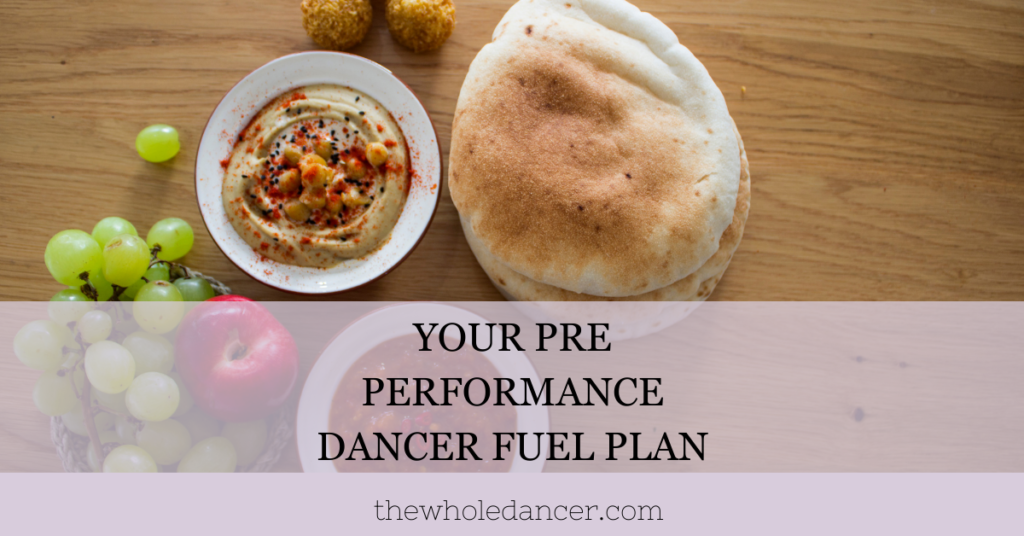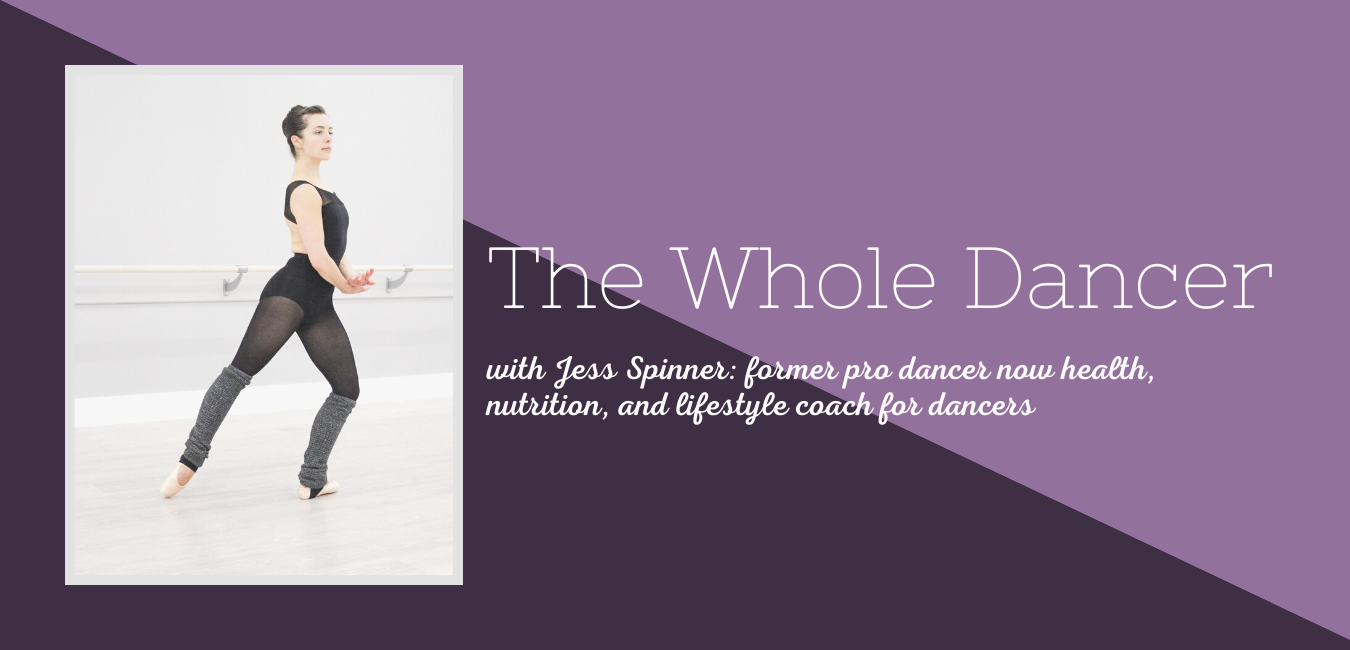Doing a good job of fueling your performance for dance is an ongoing process. It’s really so important that you consider your nutrition needs all the time, not just in the weeks, days, and hours leading up to a show. However, there are some additional considerations you can keep in mind during the times when performing is imminent.
Even if you don’t have performances coming up, these fuel plan details are important if you have upcoming auditions, casting, or competitions as well. You want to ensure that you’re getting adequate fuel and nourishment without feeling weighed down before any of these occasions.

The weeks leading up to a performance…
It’s tempting, and I have totally been there, so I get it—to think about eating less as a show or audition approaches. You’ve been conditioned to believe that smaller bodies are better in dance, so you might take a drastic or restrictive approach to food before an important dancing opportunity.
Do your best to resist that temptation. Even if it yields a short-term shift in your body, it can have long-term negative impacts. You will increase the likelihood of getting an injury attached to food intake. Some examples include tendinitis, muscle tears, or stress fractures. You might make it through the performance or audition, but an injury might follow shortly after. Make sure you’re eating enough to avoid the potential for injury.
You’ll also feel better mentally and physically if you adopt a sustainable approach to your pre-performance fuel plan. Short-term restrictive eating doesn’t yield long-term results, though as already mentioned, it can result in injury that can have a long-term impact on your dancing and career. If you have increased hours of rehearsal leading up to a performance, your body will require more food than usual.
The days leading up to a performance…
Before you even overthink food, make sure you’re prioritizing sleep. To do your best dancing and to feel your best, you’ll need more sleep. Teen dancers need up to 12 hours of sleep a night, and most dancers, as highly active athletes, need 8–10 hours of sleep a night.
Depending on your schedule, you may not have the opportunity for bigger meals amid your rehearsals. Snacks are your best friend in both busy rehearsal times and when you’re in the theater. Grab a free snacking guide here for 30 recipes and snack ideas to help you get started.
SNACKING GUIDE BUTTON
2–3 hours before dancing…
In the few hours before dancing, there are a number of things to keep in mind with your food choices. You’ll want to incorporate fuel that helps you to sustain your energy, boost your performance, keep you hydrated, preserve muscle mass, and aid in recovery. Here are some macronutrient considerations to help you hit each of those performance targets.
Protein. Having protein during this time frame will lessen muscle damage and can aid in muscle growth. Whole food sources of protein can work great at this time. You don’t need to use protein powder for ease of digestion. You should be able to feel comfortable even if you eat some whole food protein a few hours before you dance.
Protein food sources to consider: lentils, chicken, eggs, tofu, tempeh, fish, yogurt, nuts, quinoa.
Carbohydrates. Incorporating complex carbs is going to boost your energy and also support post-dancing recovery. They’ll preserve muscle and liver glycogen and stimulate the release of insulin. When you combine carbs and protein during this time, it enhances your body’s ability to synthesize proteins and prevent their breakdown.
Complex carb food sources to consider: quinoa, brown rice, oats, lentils, chickpeas, whole grain bread, pasta, cereal, crackers, potatoes, sweet potatoes.
Fats. The main benefit of fats during the 2–3 hours before dancing is that they slow digestion, which can help to keep you satiated and energized for longer by maintaining blood glucose levels.
Fat food sources to consider: nuts, nut butters, avocado, egg yolks, oils, chia seeds, flax seeds, hemp seeds, sunflower seeds.
Important consideration: Dancers need to stay mindful of fat intake as overconsumption can make it hard to meet your carbohydrate needs. “Excessive fat intake at a given meal will have a negative impact on the dancer’s ability to perform fully in class right after the meal as it sits in the stomach for several hours.”
This doesn’t mean don’t eat fat. This means consider the timing of your dietary fat intake.
30–60 minutes before dancing…
As you get closer to your performance, audition, or competition, you need to be even more aware of eating things that work best for you. That’s where the experimentation in the days and weeks leading up to performance shows it’s real value. You’ve figured out what quick fuel options energize you without any lethargy.
Because you have less time to digest, you want to have something that doesn’t require much work from your body or digestive system. You might have a smoothie or shake in the time leading up to your performance. Keep it relatively simple with a plant milk, protein powder, some berries, banana, and some flax seeds or nut butter.
Sugars are in fact a great option in this shorter window right before you dance. Incorporate sources of glucose, the simplest form of sugar, that is found in foods like bread, pasta, and fruit.
Some quick energy options include dates, bananas, berries, dried fruits, grapes, or honey.
Prioritize sleep.
With stage rehearsals and tech week, this can be challenging. Most companies will at least schedule later call times to provide some time to sleep in after a late night. Take advantage of that! Sleep is going to help you feel energized and ready to perform. It’s also essential to manage the hormones that regulate hunger and fullness.
Final thoughts on your pre-performance dancer fuel plan…
Food before a performance should serve as your fuel, and you will likely need to include convenience options as well. If you’re in the process of allowing for greater variety and flexibility with your food choices, performance time should be no different. There is no single best way to eat in the days or weeks leading up to important dancing opportunities. Go through the process to discover what works best for you. You’re performing at such a high level and requiring so much of your body. Supportive fuel is a must.
